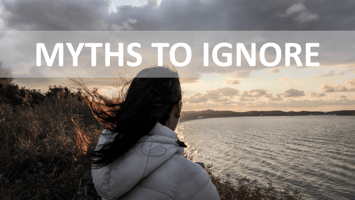Focus is the unsung hero of stunning landscape photography. Nail it, and your images radiate...
3 Key Photography Tips You're Probably Overlooking
Have you ever found yourself caught in an endless cycle of planning your next photography adventure, endlessly scrolling through YouTube tutorials, or daydreaming about capturing breathtaking landscapes in distant locations? If so, you're not alone. It's easy to get wrapped up in the idea of the perfect shot, but what if I told you that the key to becoming a better photographer lies in three simple principles that many of us often overlook?
Let’s dive into these three essential pieces of advice that can take your photography to the next level.
1. Stop Overthinking, Start Doing
Think about trying to master a new skill without actually practicing it. It’s like learning to play golf without hitting a single ball, or giving a presentation without ever rehearsing. The same thing happens when we focus too much on planning the “perfect” shot or scouting ideal locations while neglecting the act of actually taking photos.
I’ve been guilty of this myself. Early on, I spent countless hours watching tutorials, reading articles, and dreaming about future trips, all while forgetting the most crucial part: getting out there and shooting. The truth is, the best way to improve as a photographer is simple—take more photos, even if it’s of the familiar surroundings around you.
Your neighborhood park, a nearby forest, or even a single tree can provide endless opportunities to practice. Challenge yourself to view these scenes from different perspectives, experiment with new compositions, and play with post-processing. The more you shoot, the more you’ll improve—so get out there and start clicking!
2. The Transformative Power of Perspective
Ever heard the saying, “Change your perspective, change your world”? In photography, this could not be more true. Our natural tendency is to shoot from eye level, but by shifting your viewpoint—whether low to the ground or high above—you can transform an ordinary scene into an extraordinary one.
For instance, getting down on your knees to photograph flowers or architecture can add dramatic depth and texture to your images. A higher perspective, on the other hand, might reveal patterns or compositions you hadn’t noticed before. The key is to experiment and break free from the usual angles.
Next time you're out shooting, challenge yourself to look at familiar subjects from different heights and angles. You’ll be amazed at how small changes in perspective can completely elevate your shots.
3. Master the Art of Composition
Composition is the backbone of powerful photography, yet it often takes a backseat to technical elements like camera settings and editing. If you're serious about accelerating your growth as a photographer, one of the best things you can do is dedicate time to studying and practicing composition.
Start by analyzing the work of photographers you admire. What compositional techniques do they use to make their images stand out? Is it the use of leading lines, symmetry, or the rule of thirds? Identify these elements and try to incorporate them into your own work.
But don’t feel restricted to one style or technique—composition is as much about experimentation as it is about learning the rules. Trust your instincts and allow yourself to explore new ideas. By focusing on composition, you'll unlock endless creative possibilities and dramatically improve the quality of your images.
In Conclusion
Whether you're a seasoned pro or just starting out, remember that photography isn’t just about the latest gear or planning the perfect location—it’s about practice, perspective, and composition. These principles are simple but incredibly powerful, and by embracing them, you’ll see significant growth in your work. So stop overthinking, change your viewpoint, and study the art of composition. Keep shooting, keep experimenting, and watch your photography soar to new heights.



